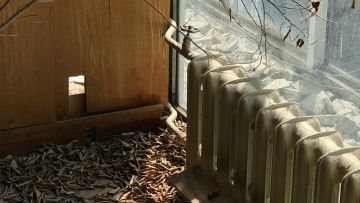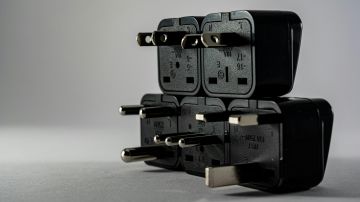Installing a diesel heater for the first time can feel like a big task, but it’s more manageable than most expect. Most first-time users finish the installation in about four to six hours, depending on their tools, workspace, and experience with basic DIY projects. The process involves setting up the heater, connecting the fuel and air systems, and testing for safe operation. With preparation and patience, even beginners can complete the job in a single day.
The time it takes often depends on a few key factors, such as heater type, vehicle layout, and how easily parts can be accessed. A clear plan and organized workspace help reduce delays. Many first-time installers find that watching short setup videos or reviewing diagrams before starting helps them avoid mistakes and stay confident throughout the process.
Understanding what affects installation time helps set realistic expectations. The following sections explain these factors in detail and outline a simple step-by-step process that shows how to complete the installation safely and efficiently.
Key Factors Affecting Diesel Heater Installation Time
Several conditions influence how long it takes to install a diesel heater. The user’s skill level, the heater’s design, and how well the workspace is arranged all play a part in how smoothly the setup goes. Careful planning and the right tools can shorten the process and prevent mistakes that cause delays.
Experience Level and Preparation
A first-time installer often needs extra hours to read instructions, check parts, and confirm safe placement. Someone familiar with basic wiring and vehicle layouts can complete the job faster. Clear labeling of parts and a simple checklist help reduce confusion during assembly.
Beginners should watch a short tutorial or study diagrams before drilling or connecting wires. This step helps avoid errors like reversed fuel lines or poor ventilation paths.
Proper preparation also includes checking that all components—heater unit, pump, exhaust, and control panel—are present. Missing items can pause the project. A well-prepared installer usually finishes in one day, while an unprepared one may need two.
Type and Brand of Diesel Heater
The design of the heater affects how long installation takes. Compact models with preassembled wiring harnesses save time, while larger or multi-duct systems require more steps.
A VEVOR diesel heater, for example, often arrives with labeled parts and clear instructions, which helps beginners complete the setup more quickly. Simpler models also use fewer fittings and shorter fuel lines, cutting down on adjustments.
Some heaters need custom mounting brackets or extra insulation around the exhaust. These added steps increase the total time. Reading the manual carefully before starting helps estimate how much work each model demands.
Required Tools and Workspace Setup
The right tools and a clean workspace can make a big difference. A drill, screwdrivers, wrenches, and a hole saw are basic needs. Having them ready before work begins saves repeated trips for missing items.
A well-lit, level area allows easy access under the vehicle or to the cabin floor. Poor lighting or tight spaces slow progress and raise the chance of mistakes.
Organizing parts on a table and marking drill points before cutting speeds up the job. A safe, tidy setup supports faster work and reduces the risk of damage to the heater or vehicle.
Step-by-Step Diesel Heater Installation Process
A diesel heater setup involves several precise tasks that require patience and attention to detail. The process includes checking parts, securing the heater, connecting the fuel system, and fitting the exhaust and intake pipes to guarantee safe and steady heat output.
Component Identification and Kit Inspection
Each diesel heater kit includes several parts that must be verified before installation. Most kits contain the heater unit, fuel tank, fuel line, air intake pipe, exhaust pipe, air filter, mounting plate, and wiring harness. Some models, such as a Chinese diesel heater, may also include a remote control or LCD thermostat.
Inspect every part for damage or missing hardware. A missing clamp or cracked hose can cause leaks or poor performance later. Compare the items with the product manual to confirm all components match the list.
Lay out the parts in a clean workspace. Group them by function—air system, fuel system, and electrical system—to make assembly easier. This step helps prevent confusion once the installation begins and reduces the chance of mixing parts.
Mounting the Diesel Heater Unit
The heater unit should sit in a dry, flat area inside the vehicle or camper, often under a seat or bed. The surface must support the heater’s weight and allow space for air circulation.
Mark the hole positions for the mounting plate and cut through the floor using the appropriate hole saw. The holes must align with the air intake and exhaust outlets on the heater base.
Bolt the heater securely to the plate. Seal around the holes with heat-resistant silicone to block fumes and moisture. Leave enough clearance for the air intake pipe and wiring connections. A tight and stable mount prevents vibration, noise, and fuel line strain during travel.
Installing the Fuel Tank and Fuel Line
The fuel tank usually mounts outside the living area, often on a rear wall or undercarriage. It must sit higher than the fuel pump to allow steady fuel flow. Keep it away from heat sources and direct sunlight.
Attach the fuel line between the tank, pump, and heater. Secure each connection with clamps to prevent leaks. The fuel pump should rest at an angle of about 15–30 degrees to help air move through the line.
Before connecting power, check that the fuel filter sits in the correct direction of flow. A clean and properly fitted line helps the heater start faster and run evenly without air bubbles or blockages.
Attaching the Exhaust and Intake Pipes
The exhaust pipe directs fumes outside the vehicle. It must exit through the floor or side wall, away from doors or windows. Use a metal clamp to secure it and keep it clear of flammable materials. The pipe should slope slightly downward to let condensation drain away.
The air intake pipe draws fresh air into the combustion chamber. Position it opposite the exhaust outlet to prevent contamination. Attach the air filter to the intake end to block dust and debris.
Check that both pipes have smooth bends and no kinks. Tighten all fittings and apply sealant where needed. A well-installed exhaust and intake system keeps the heater quiet, efficient, and safe during use.
Conclusion
Most first-time users can install a diesel heater in about 4 to 8 hours, depending on their tools, workspace, and experience level. Clear instructions and preparation shorten the process, while tight spaces or missing parts often extend it.
A steady pace helps prevent mistakes and keeps the setup safe. Careful planning before drilling or wiring also reduces the chance of delays.
Regular checks after installation help the heater run smoothly and safely. With patience and attention to detail, anyone can complete the job successfully and gain steady heat for travel or off-grid use.

















